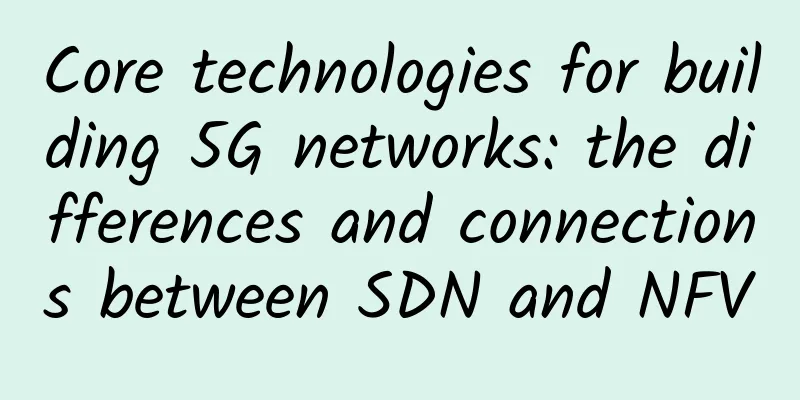Wi-Fi 6 is just being used, and Wi-Fi 7 from the three major players is already on the way

|
The latest generation of Wi-Fi technology, Wi-Fi 6, has just begun to become popular, and the next generation of Wi-Fi technology has already begun research and development, with the speed expected to increase by 3 times.
Qualcomm Snapdragon 865 is one of the first mobile phone SoCs to support Wi-Fi 6. So with the launch of mobile phones equipped with Snapdragon 865 and other mobile phones that support Wi-Fi 6, this new connection technology has begun to spread rapidly. At the same time, there are more and more wireless routers that support Wi-Fi 6. Now, we are waiting for the next generation of Wi-Fi technology, which should be called Wi-Fi 7. It is understood that the three major chip giants - Qualcomm, Broadcom and MediaTek are already developing related technologies, but this latest Wi-Fi technology will not be used soon. Qualcomm expects that the launch of this technology will take at least 2-3 years. Recently, Qualcomm Vice President Rahul Patel pointed out that Qualcomm has launched and mass-produced multiple Wi-Fi 6 products in the past two years, which are widely used in smartphones, PCs, and routers. Wi-Fi 6E products have also been mass-produced since the second half of last year. Qualcomm has already started the research and development of Wi-Fi 7. Qualcomm predicts that Wi-Fi 7 will double network speeds compared to Wi-Fi 6. Wi-Fi 7 can also combine multiple spectrums, which should mean higher-quality connections, but again, this isn't going to be widely available anytime soon. In addition to Qualcomm, chip companies such as Broadcom and MediaTek are also actively developing Wi-Fi 7 chips. In this year's shareholder report, chip manufacturers stated that they have begun to actively invest in the next generation of Wi-Fi 7, and the battlefield has extended from smartphones and PCs to more fields. For the entire mobile communications industry, this is undoubtedly a healthy competition. By the way, Wi-Fi 7 is likely to be the commercial name of the future 802.11be standard. Compared with the maximum 8 data streams of Wi-Fi 6, Wi-Fi 7 will support 16 data streams and CMU-MIMO technology. Among them, C stands for Coordinated, which means that the 16 data streams may not be provided by one access point, but by multiple access points at the same time. Secondly, Wi-Fi 7 will continue to support the 6GHz band, and the three bands can be connected and work simultaneously, expanding the width of a single channel from 160MHz of Wi-Fi 6 to 320MHz. Wi-Fi 7 also upgrades the signal modulation method to 4096QAM to have a larger data capacity. Therefore, the final speed of Wi-Fi 7 can reach 30Gbps, which is three times the speed of the fastest Wi-Fi 6 currently launched at 9.6Gbps. This article is reproduced from Leiphone.com. If you need to reprint it, please go to Leiphone.com official website to apply for authorization. |
>>: 5G technology can now read human emotions in public areas
Recommend
RAKsmart: 30% off on all VPS, popular VPS starting at $1.99 per month, San Jose/Los Angeles/Japan/Hong Kong data centers
RAKsmart is offering VPS hosting at a super low p...
Which unlimited package of the three major operators is more cost-effective? Detailed comparison
Starting from July 1 this year, China Mobile, Chi...
Six great ways to improve your web page loading time
【51CTO.com Quick Translation】 Aberdeen Group once...
In the era of stock management, operators still need to provide refined services
Recently, the three major operators announced the...
The future of TMT regulation: from telecom operator networks to OTT network effects
Luca Schiavoni, senior analyst for regulatory pol...
The father of the Internet: The Internet is at a "critical point" and has deviated from the original idea
[[248660]] Tim Berners-Lee Beijing time, November...
SoftShellWeb: 30% off VPS in Taiwan/Netherlands/San Jose, 1Gbps unlimited traffic from $3.5/month
SoftShellWeb has launched a promotion for all VPS...
2022 UBBF | Huawei iMaster NCE promotes FTTR intelligent monetization
[Bangkok, Thailand, October 28, 2022] Recently, t...
Comprehensive diagram! Global operators' 5G deployment plan timeline
GSA's latest report shows that 154 mobile ope...
Can 6G technology directly skip 5G technology?
1G→5G: There is precedent for skipping As far as ...
Aruba Global Research Report Reveals AI Technology Will Become a Powerful Tool to Meet Security Challenges in the IoT Era
On October 26, 2018, Aruba, a Hewlett Packard Ent...
What does Wi-Fi bring to Matter’s push for home IoT?
As Matter’s foundational technology, Wi-Fi can he...
User says | IPL helps medical experimental training to get on the fast track
Anhui Medical College is a public general college...
Huawei's "Government Cloud China Tour" has a unique scenery in Shaanxi
In June, people from all over the world gathered ...








![[Black Friday] Ramnode offers free gifts for as much as you charge, cloud servers in data centers in Los Angeles/Seattle/New York/Netherlands](/upload/images/67cabceb5b716.webp)
